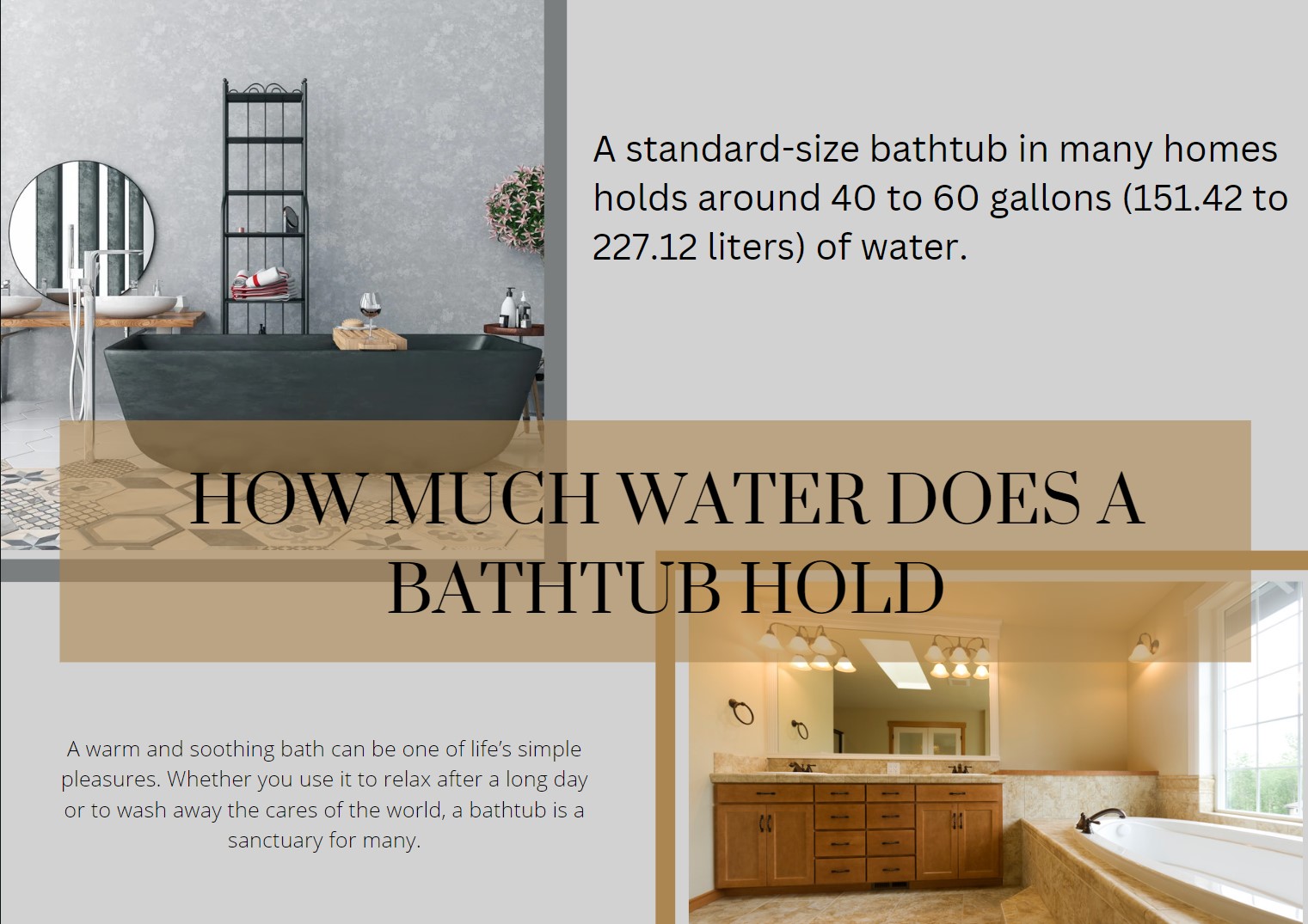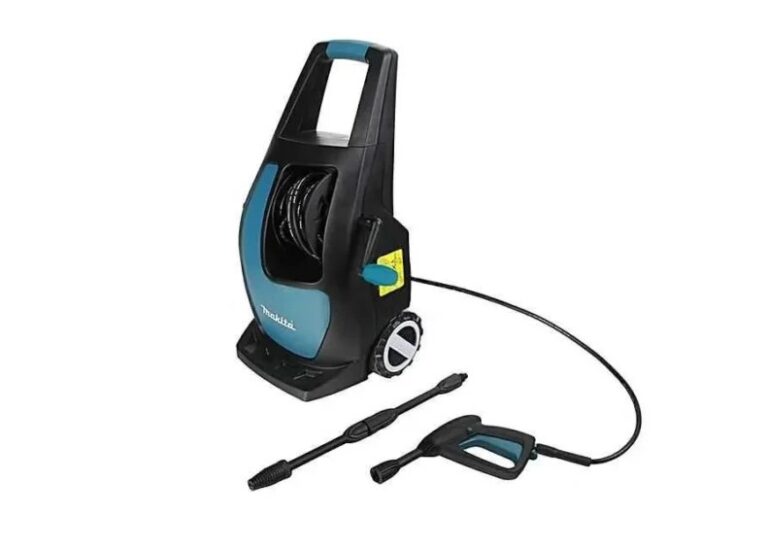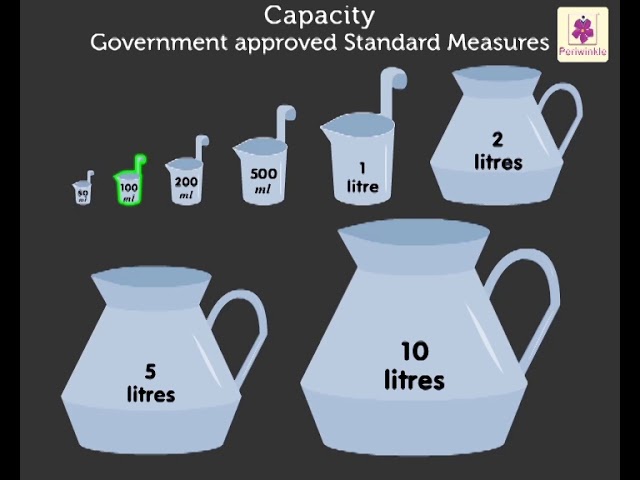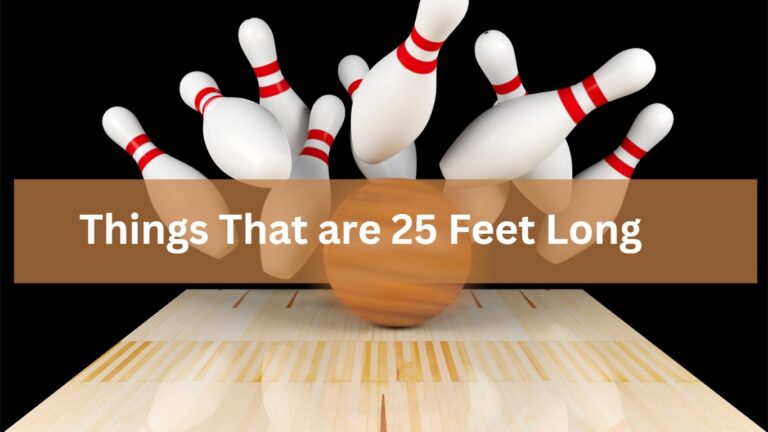How Much Water Does a Bathtub Hold: Exploring Bathtub Capacities

A warm and soothing bath can be one of life’s simple pleasures. Whether you use it to relax after a long day or to wash away the cares of the world, a bathtub is a sanctuary for many.
But have you ever wondered just How Much Water Does a Bathtub Hold?
A standard-size bathtub in many homes holds around 40 to 60 gallons (151.42 to 227.12 liters) of water.
In this comprehensive guide, we will discuss the depths of bathtub sizes, and their water-holding capacities, and answer some frequently asked questions to help you make the most of your bathing experience.
Water Capacity of my Bathtub
To determine the water capacity of your bathtub, you can follow these steps:
Step 1
Measure the length, width, and depth of your bathtub in inches.
Step 2
Multiply the length, width, and depth measurements to calculate the volume in cubic inches.
Step 3
Divide the volume in cubic inches by 231 (since there are 231 cubic inches in a gallon) to convert it to gallons.
For example, if your bathtub measures 60 inches in length, 30 inches in width, and 16 inches in depth:
Volume = 60 inches x 30 inches x 16 inches = 28,800 cubic inches Water capacity = 28,800 cubic inches / 231 = approximately 124.7 gallons.
How Much Water Does a Bathtub Hold?

Here’s an example of a simple table that shows the approximate amount of water a standard bathtub can hold:
| Bathtub Type | Capacity (Gallons) |
|---|---|
| Standard Alcove Tub | 40-60 |
| Deep Soaking Tub | 60-80 |
| Clawfoot Tub | 40-60 |
| Corner Tub | 50-70 |
| Whirlpool/Jacuzzi Tub | 60-80 |
These are general estimates, and actual capacity can vary based on the specific design and dimensions of the bathtub. It’s always a good idea to check the product specifications provided by the manufacturer for the most accurate information.
Types of Bathtubs
Before we dive into the specifics of water capacity, it’s essential to recognize that bathtubs come in various shapes and sizes. The capacity of a bathtub depends on its design, and here are some common types:
Standard Alcove Bathtub:
These are the most common bathtubs found in homes. They are typically 60 inches long, 30-32 inches wide, and 14-16 inches deep. A standard alcove bathtub can hold around 40-60 gallons (151-227 liters) of water.
Corner Bathtub:
These triangular-shaped bathtubs are ideal for saving space. They usually have similar dimensions to alcove bathtubs but might vary slightly. Their water capacity ranges from 40 to 60 gallons (151-227 liters).
Freestanding Bathtub:
These tubs are not attached to any walls and are often chosen for their aesthetic appeal. Freestanding bathtubs can vary widely in size, but on average, they hold 50 to 80 gallons (189 to 302 liters) of water.
Soaking Tub:
Soaking tubs are designed for deep immersion. They are deeper than standard tubs, typically around 27-32 inches deep, and can hold 40-80 gallons (151-302 liters) of water, depending on their size.
Walk-In Bathtub:
These tubs are designed for individuals with limited mobility. Their capacity ranges from 40 to 80 gallons (151-302 liters) or more, depending on the model.
Japanese Soaking Tub:
Inspired by traditional Japanese fours, these compact tubs are deep but shorter in length. They typically hold 40-60 gallons (151-227 liters) of water.
Clawfoot Bathtub:
Known for their vintage charm, clawfoot tubs vary in size, but they generally hold 40-60 gallons (151-227 liters) of water.
Factors Affecting Bathtub Water Capacity
Several factors can influence the water-holding capacity of your bathtub:
Shape and Size
As mentioned earlier, the type of bathtub you have will significantly impact its water capacity. Larger and deeper tubs can hold more water.
Material
The material your bathtub is made of can also affect its capacity. Cast iron and acrylic tubs, for example, can hold more water than fiberglass or steel tubs because they are sturdier.
Overflow Drain
Most bathtubs are equipped with an overflow drain to prevent overfilling. This feature reduces the effective water capacity slightly, as water will start draining when it reaches a certain level.
Fill Level
The depth to which you fill your bathtub can vary. Some people prefer a shallow soak, while others like a deeper immersion. Adjusting the fill level will directly impact the amount of water used.
Water Heater Capacity
The capacity of your water heater can also affect your bathing experience. If you have a small water heater, you may not be able to fill your bathtub with hot water completely.
Water Conservation and Bathtub Capacity
Understanding how much water your bathtub can hold is not just about comfort but also about being environmentally conscious. Here are some tips to conserve water while using your bathtub:
- Take Shorter Baths: Reducing your bath time can save a significant amount of water.
- Fill the Tub to the Minimum Level Needed: Filling the tub to your desired depth instead of overfilling can help conserve water.
- Fix Leaks: Ensure that your bathtub doesn’t have any leaks that could waste water over time.
- Upgrade to Water-Efficient Fixtures: Consider installing a water-efficient faucet or showerhead to reduce water consumption during your baths.
- Collect Bathwater: If you’re particularly water-conscious, you can collect the water as your bathtub fills and use it for other purposes like watering plants.
Now that we’ve explored how much water bathtubs can hold and how to conserve water, let’s address some frequently asked questions about bathtubs.
FAQs
1. What is the standard size of a bathtub?
The standard size of a bathtub is typically around 60 inches in length, 30-32 inches in width, and 14-16 inches in depth. However, there are various types of bathtubs with different sizes, so it’s essential to measure your specific bathtub to determine its dimensions accurately.
2. How much water does a standard bathtub hold?
A standard alcove bathtub, which is the most common type, can hold approximately 40-60 gallons (151-227 liters) of water. The exact capacity may vary slightly depending on the specific model and brand.
3. Are larger bathtubs more comfortable?
Larger bathtubs can offer more space and a more comfortable bathing experience for those who enjoy stretching out or need extra room. However, personal comfort preferences vary, and some people may find smaller tubs just as cozy.
4. Can I replace my small bathtub with a larger one?
Replacing a bathtub with a larger one is possible, but it can be a significant renovation project. It involves removing the old tub, modifying the plumbing, and installing the new bathtub. It’s advisable to consult a professional plumber or contractor for such changes.
5. Do soaking tubs hold more water?
Yes, soaking tubs are designed to hold more water than standard bathtubs. They are typically deeper, with depths ranging from 27 to 32 inches or more, allowing for a more immersive bathing experience. Soaking tubs can hold 40-80 gallons (151-302 liters) of water or even more, depending on their size.
6. Can I use a water heater with a small capacity for my bathtub?
Using a water heater with a small capacity for a bathtub may result in limited hot water availability. If your water heater cannot supply enough hot water to fill your bathtub adequately, you may need to consider upgrading to a larger water heater or installing a tankless water heater, which provides hot water on demand.
Conclusion
Understanding how much water your bathtub can hold is not only essential for your comfort but also for water conservation. Different types of bathtubs have varying water-holding capacities, with standard alcove bathtubs typically holding 40-60 gallons. Factors such as the bathtub’s shape, size, material, and fill level can influence its capacity.
To conserve water, consider taking shorter baths, filling the tub to the minimum level needed, fixing any leaks, and upgrading to water-efficient fixtures. Additionally, collecting bathwater for other uses can further reduce water waste.
Whether you have a standard bathtub or a luxurious soaking tub, knowing your bathtub’s capacity allows you to make the most of your bathing experience while being mindful of water usage. So go ahead, run that bath, and soak away your stress, knowing you’re making informed choices about water consumption.






